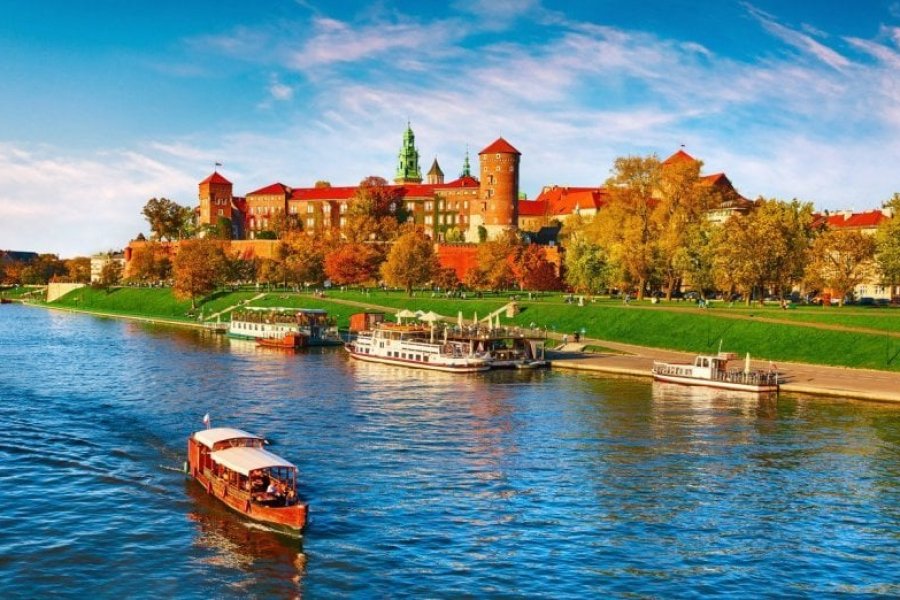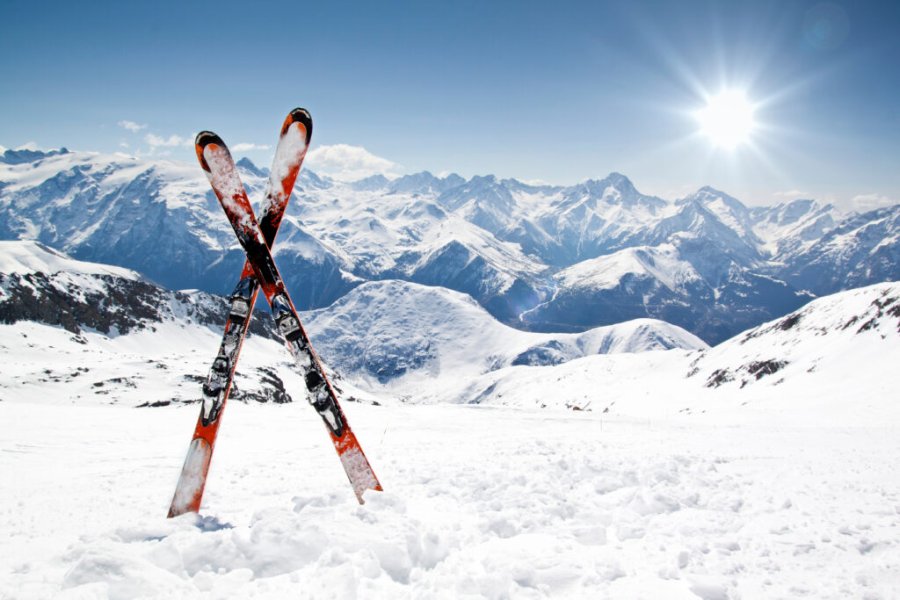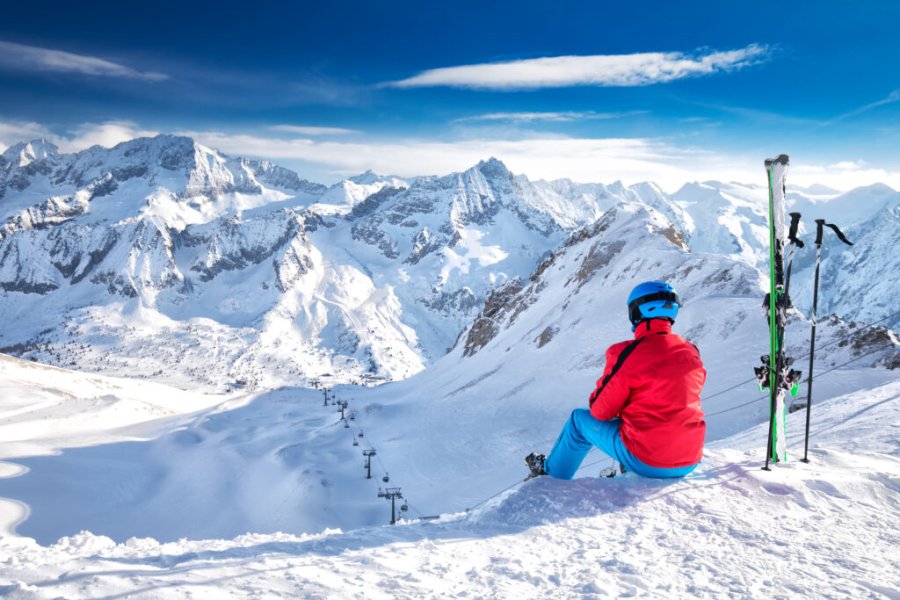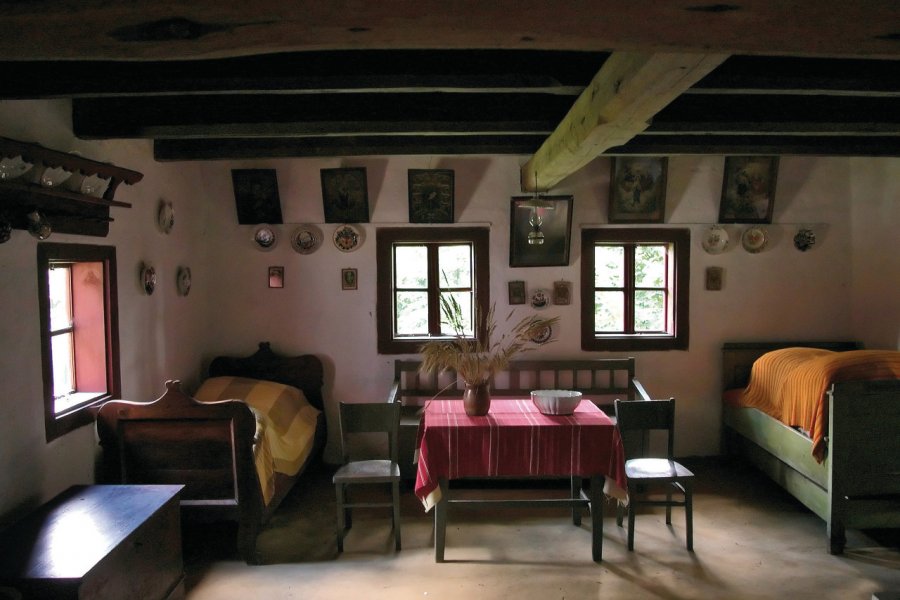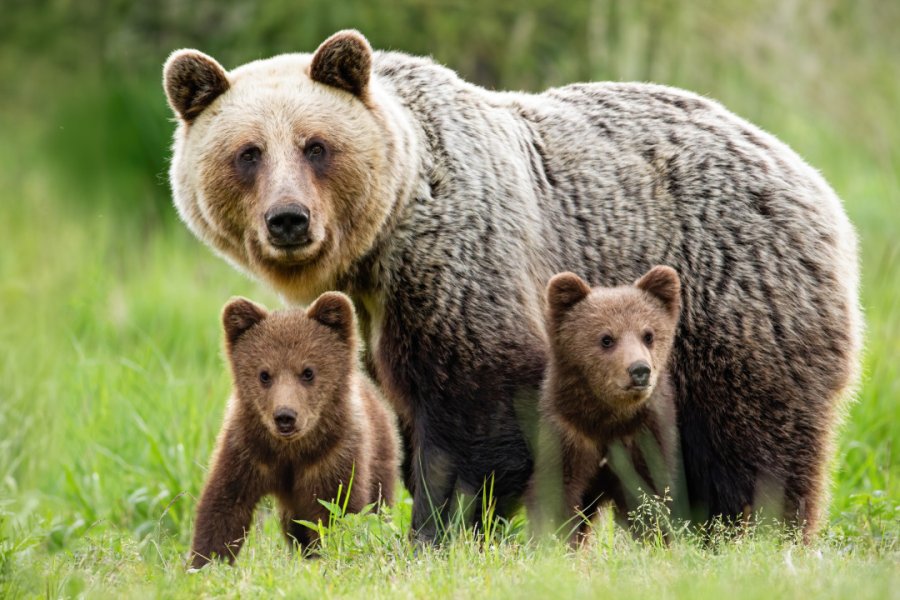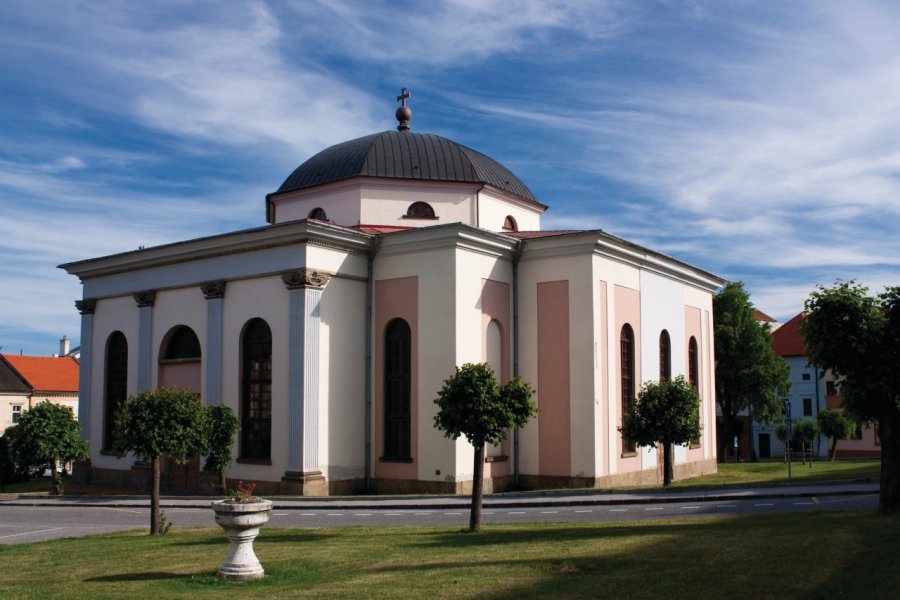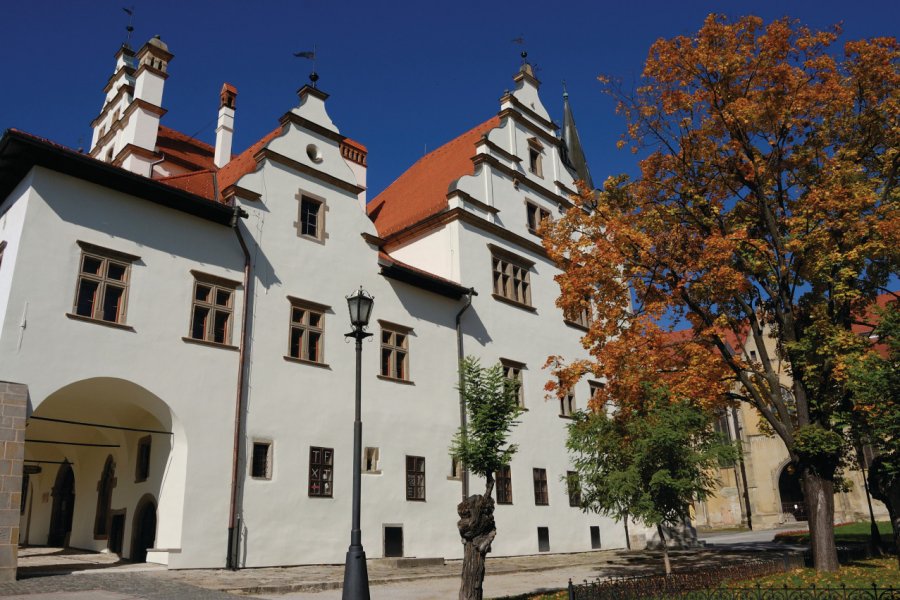Travel guide Slovakia
Often confused with Slovenia or thought to be part of Czechoslovakia, Slovakia was born in 1993 and has a strong desire for recognition. And, considering the many assets of this small republic on the borders of Central Europe, it deserves it! A real concentrate of romanticism and mysteries, its natural spaces are at least as exceptional as its historical heritage is rich. Half of the territory is covered with dense forests such as the Poloniny forest where impressive fauna and flora abound - of which the brown bear is the symbol -, while under the ground there are formidable networks of caves. The Tatras and Malá Fatra mountain ranges are also Slovak treasures and incredible playgrounds for hikers and skiers. In terms of architecture, Slovakia is not to be outdone, with its fortified castles built on blocks of powerful rocks soaring above the void, and the medieval character is still very much present in the heart of towns and villages, starting with the capital Bratislava. This is the picture that the tourist guide of Slovakia proposes to explore, that of a rich and tormented history, marked by the Hungarian domination, then Czech, and 40 years of communism. The Slovaks are very patriotic, and the stories you hear in the taverns, accompanied by a glass of brandy, are fascinating. A member of the EU since 2004, Slovakia is today a destination with unsuspected charms that are just waiting to be discovered.
What to see, what to do Slovakia?
-
Book an activity
-
Customized travel
- The most beautiful cities Slovakia
When to go Slovakia ?
When to go to Slovakia? The peak season is in July and August throughout the country and from December 15 to January 15 in the mountainous areas, the peak being of course between Christmas and New Year's Day. The majority of hotels and tourist resorts take these tourist peaks into account, both in their schedules and in their rates. The half or low seasons run from February to mid-June and from mid-September to early December. The best time to go to Slovakia is at the beginning and end of the summer, i.e. the last two weeks of June and the first two weeks of September, when temperatures are pleasant and hotel rates are affordable. When to go to Slovakia to enjoy winter sports? From December to March, avoiding the peak in the last week of December.
Suggested addresses Slovakia
Travel Slovakia
-
Find a hotel
-
Car Rental
-
International e-SIM package
-
Find a local agency
Slovakia is a small country with unsuspected riches, your gateway will probably be western from Vienna, or directly from Bratislava. Many tour operators offer stays with the capitals on the Danube: Vienna, Bratislava, Budapest. These programs are attractive, but if you are interested in discovering Slovakia, we advise you to venture into the interior of the country. The capital is very well connected to the rest of the country and the surrounding area is easily accessible by bus or train. It takes between 10 and 15 days to go around the country. The longer your stay, the further east you can go with its wooden churches. The must-see are Banská Štiavnica, Dunajec Gorge, Spiš Castle, Slovak Paradise Park
Find unique Stay Offers with our Partners
How to go Slovakia
How to go alone
As always, the secret to a successful trip is anticipation, at least if your budget is limited. A round trip flight from France costs between 50 and 100 € with low-cost airlines, and 150 to 200 € with traditional airlines. As far as accommodation is concerned, the options are numerous and inexpensive: hostels and inns, rooms in private homes, modest pensions and luxury hotels. There are no security problems in Slovakia.
How to go on a tour
Slovakia, just like its neighbor the Czech Republic, is constantly attracting the curious, so much so that tourism specialists in Central Europe have entered the niche and offer very well put together turnkey trips. In general, there are offers for long weekends combining flights to Bratislava and accommodation, but also week-long itineraries throughout the country. To be combined with the discovery of the neighboring countries if you have enough time.
How to get around
Buses are the king mode of transportation in Slovakia: they are cheap and more frequent than trains. Cabs work well in the city as does the road network throughout the country. Bratislava is connected to the two other capitals on the Danube, Vienna and Budapest, by boat.
We advise you to consult the indispensable CP (Cestovné Poriadky) website, the best comparative website for travel in Slovakia, listing all connections in Slovakia and abroad.
Featured articles Slovakia
Discover Slovakia
Slovakia is a small country of 49,036 km² with a maximum length from west to east (from Záhorská Ves to Nová Sedlica) of 428 km and a width from north to south varying between 78 and 195 km (from Štúrovo in the south to Skalité in the north). The country shares 265 km of border with the Czech Republic, 127 km with Austria in the west, 679 km with Hungary in the south, 98 km with Ukraine in the east and 597.5 km with Poland in the north. Nestled in the heart of Europe, Slovakia, despite its size, is full of treasures: a natural heritage with nine national parks for the greatest pleasure of hikers, an ecosystem that preserves a particularly rich vegetation and animal life of which bears, wolves and lynxes are the symbol, a historical heritage with many castles and especially unique wooden churches, especially in the east of Slovakia, fruit of the tumultuous history of the country.
Pictures and images Slovakia
The 12 keywords Slovakia
1. #Automobile
Slovakia is a paradoxical country when it comes to automobiles. It is one of the three EU countries with the lowest number of cars per capita; conversely, it produces the most cars per capita. The combination of tax benefits, wages and worker qualifications led Peugeot, Volkswagen and Kia to set up their factories there.
2. #Christmas Carp

Among the many Christmas traditions in Slovakia, one may seem somewhat surprising. Carp is a compulsory food on the evening of the Nativity. However, it is bought alive and left in the bathtub, before being killed at the last moment. The fish is then fried or breaded and served with potato salad.
3. #Centre of Europe
Don't tell Slovaks that they are from Eastern Europe, because the centre of Europe is at home! It is exactly at the top of the Krahule hill, near the city of Kremnica in central Slovakia. They are at the centre of a Europe that stretches from the Atlantic to the Urals and includes Ukraine and Belarus, and they are attached to it.
4. #Cyril and Method
They are two Greek evangelizers, sent in the 9th century to Great Moravia to spread Byzantine Christianity. Cyril invented for the Slavs, a people without writing, the glagolitic, alphabet that became Cyrillic. Method translated the Bible. They are the founders of Slovak knowledge and culture, their cross adorns the flag.
5. #Fujara

Very long flute made of elderberry wood with three holes originally used by Slovak shepherds. During the 19th and 20th centuries, the fujara gradually moved from being a working tool to a musical instrument, thanks to the spread of folk music. This instrument was inscribed on the UNESCO heritage list at the end of 2005.
6. #High Tatras

A geological strangeness, the Tatra range rises to 2,655 m in a surreal vision of a long plain surrounding the town of Poprad. Its craggy, violently rugged peaks are a veritable paradise for hikers and mountaineers. The beauty of these peaks is the pride of the Slovaks, who make them national symbols.
7. #Juraj Jánošik
He is considered Slovakia's Robin Hood. A rebel and brigand, ex-army soldier, he reigned until he was sentenced to death in 1713. During this troubled period of aristocratic rebellion, he forged his legend by "taking from the rich to redistribute to the poor". His story has inspired numerous novels, plays and films.
8. #Krčma
"Bar" or "tavern". This word comes up quite often in discussions (Ideme do krčmy, we go to the bistro). Taverns in Slovakia are important places of social life, mainly in small villages. It is the traditional meeting place for the entire population who gather here for a beer rather than at home.
9. #Osada
Osada means "locality", but would translate more accurately as "gypsy ghetto". Deeply discriminated against, Roma populations live on the economic and often geographical bangs of Slovak cities. Mainly in the east of the country, almost every town has its own osada, physically separated from other districts by a road, a river or a wall.
10. #Titles
In Slovakia, as is often the case in Central European countries, people introduce themselves or are introduced by their title. You will find the diminutives Ing (Inžinier/engineer), Dr or PhD on the mailboxes. (Doktor for PhD holders) followed by the surname. These titles are just as important orally as they are in writing.
11. #Treaty of Trianon
Signed on 4 June 1920 following the First World War, this treaty led to the dismantling of the Kingdom of Hungary to the benefit of Slovakia in particular. Today, almost 9% of the population is still Magyarophone and remains very attached to Hungary. After periods of tension, the situation seems to have calmed down since EU integration.
12. #Valaška

Traditional Carpathian shepherd's axe. Richly ornamented and up to a metre high, it was used as a sidearm and walking stick. Today, this axe is most often found in folk art museums. Lighter versions are still used in folk dances (such as the ozdemok dance).
You are from here, if...
If you're a guest,you'll need to remove your shoes once you've crossed the threshold. There's usually an area with a bench for this purpose in each apartment, and your hosts will lend you the guest slippers.
You don't kiss and greet, but shake hands. Maybe you'll get around to it one day, if you've reached a certain level of intimacy or camaraderie.
You have a bar culture and share your table. To play it local, end your evening at the counter with a kapurková, the last drink, a round of shots before heading home.
Lunch in a restaurant. Every restaurant in the country offers a denne menu, a weekday lunch menu priced between €3.50 and €8. This is how Slovaks eat lunch, and it's good to start with soup, whatever the season.
Your reflex is to take a cab home. Cabs are cheap, between €2.50 and €5 a ride in town, so do as the locals do.

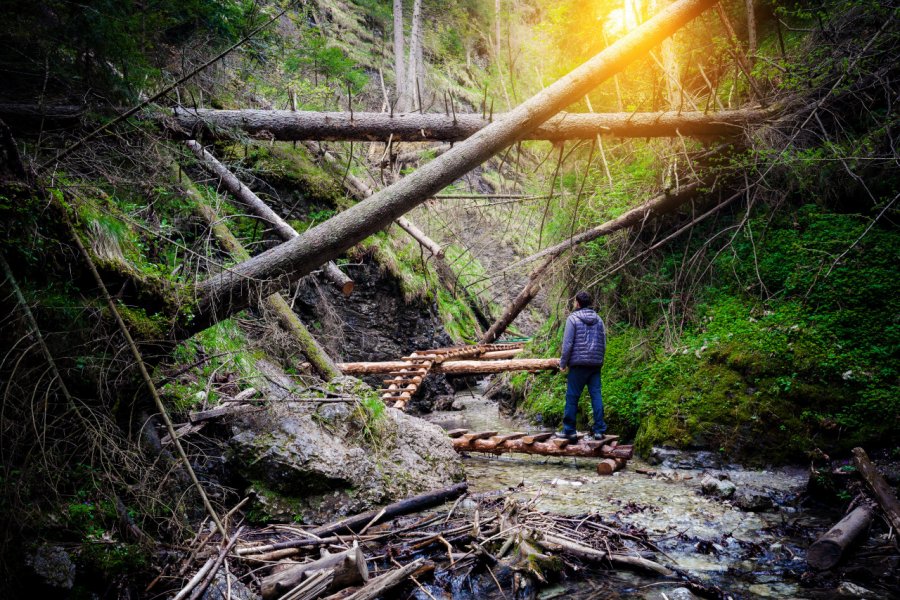

![IMG_8615[3].jpg](image:/medias/feg/02/83/028377.jpg)





